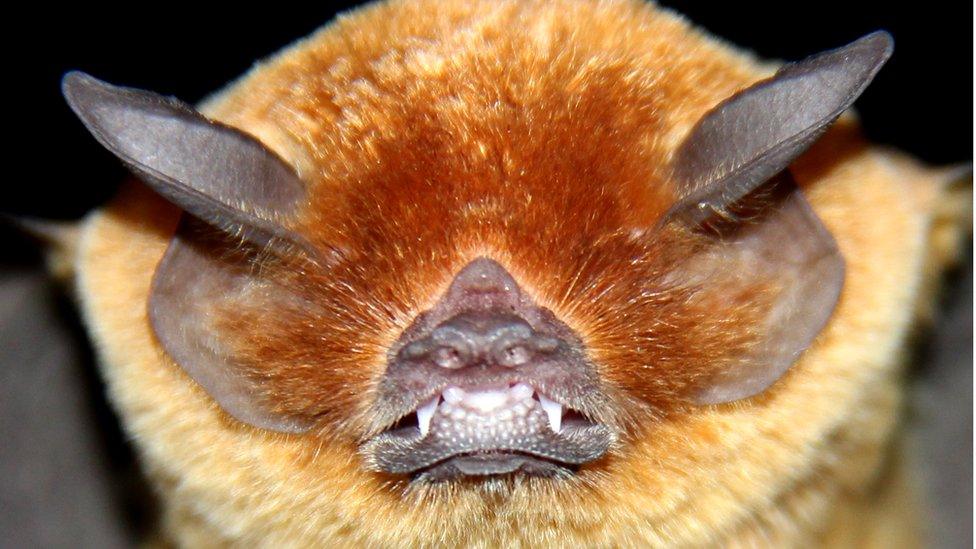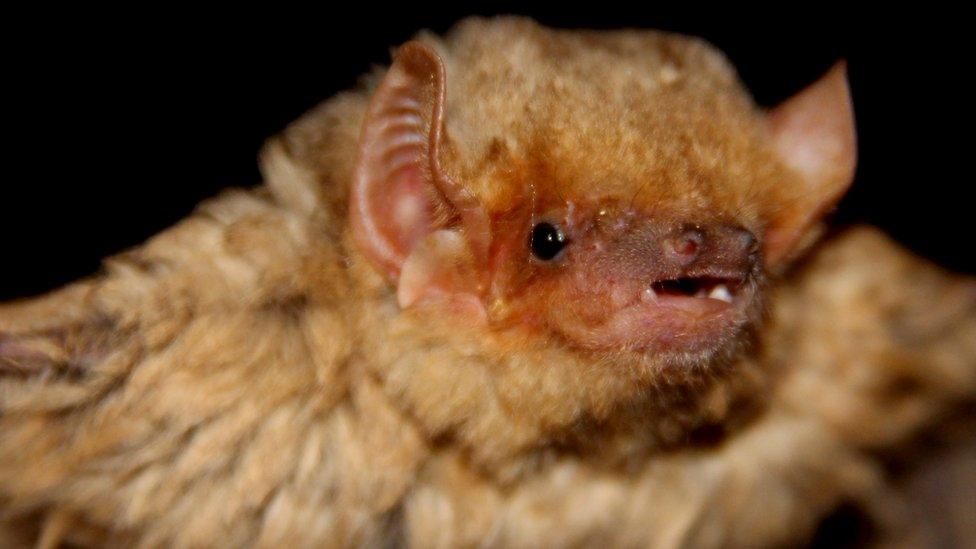Bat-sound library tracks biodiversity
- Published

El Pinacate reserve is one of the driest places on Earth and home to many bats
Scientists have compiled the biggest known library of bat sounds in an effort to identify and conserve rare species.
Mexico is home to many of the world's bats, but it also has one of the highest rates of extinction.
International researchers recorded more than 4,500 calls from about half of Mexico's 130 bat species.
The audio library allows bat calls to be identified automatically, helping to monitor any changes in biodiversity.
Co-researcher, Prof Kate Jones, of UCL and Zoological Society London, said the ability to map bats was crucial for implementing effective conservation measures.
"We've shown it is possible to reliably and rapidly identify bats in mega-diverse areas, such as Mexico, and we hope this encourages uptake of this method to monitor biodiversity changes in other biodiversity hotspot areas such as South America," she said.
Bat detectives
For the study, scientists went into the desert, jungle and tropical forests of Mexico to record bat calls, using remote monitoring stations.
They built up an audio library that included all families of Mexican bats and about half the number of species.
Machine learning algorithms and voice-recognition software was developed, which was able to identify about 70% of bat species from their call.
Bats are usually hard to identify from their sounds because they have very similar calls, which are often too high in frequency to be detected by the human ear.

Parnell's mustached bat is an insectivorous bat native to North, Central and South America

The western yellow bat (Lasiurus xanthinus) is a species of vesper bat found in Mexico and the south-western United States
Lead researcher Dr Veronica Zamora-Gutierrez, from UCL and the University of Cambridge, said audio surveys were increasingly being used to monitor changes in biodiversity, and bats were especially useful for this.
"By tracking the sounds they use to explore their surroundings, we can characterise the bat communities in different regions in the long term and gauge the impact of rapid environmental change," she said.
The team hopes to use the audio library to monitor bat populations in Mexico and other countries in South and Central America.
Fish-eating and banana bat
Mexico has among the highest bat species diversity in the world, as well as some of the world's most unusual, beautiful and bizarre bat species.
They include:
the largest carnivorous bat in the world
the fish-eating bat
the banana bat, which feeds on nectar from tropical flowers
Bats make up one fifth of all land mammals.
Many are endangered because much of their habitat has been lost to human development and some are hunted.
Bats play an important role in ecosystems, as they spread seeds and pollen from many plants and act as insect predators.
The UCL and ZSL team is working on tools for bat identification, using the Bat Detective, external website.
Details of the latest research are published in the journal Methods in Ecology and Evolution, external.
Follow Helen on Twitter, external.